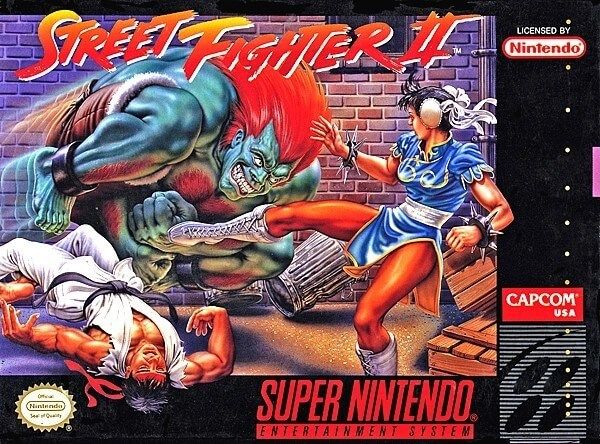Discover the incredible evolution of fighting games and how they’ve moved from casual arcade matches to million-dollar esports tournaments like EVO
Fighting games, for decades now, have been the ultimate test to see how good of a gamer one can be. Thanks to an active, passionate community, this game genre is no longer just a hobby in local arcades. It has grown into a multi-million dollar esports industry, with professional players now competing in the biggest arenas globally.
These games have grown so popular that they now have millions of gamers in every country. Whether it’s in the US, the UK, Australia or the UAE, you will find gamers who are crazily in love with them. They also now have the element of earning, where players can compete in tournaments and make money when they win. This makes them similar to online casino gaming.
As UAE-based iGaming writer Ziad Al Faryani notes in one of his reviews, there is now a thin line between competitive video gaming and casino games. In fact, the stakes in professional gaming can be as high as with online gaming.
Since the line between both worlds are now blurred, gamers can try their hands in casino games in their free time too. However, experts usually recommend going through reviews to discover the top UAE casinos for players before starting the journey.
This article will focus mainly on the growth of the entire fighting game community, and how the genre adapted, but still retained its flavor. Let's dive in.
Introduction to Arcade Gaming
The fighting game genre had its first outbreak in the early 1990s with the release of Capcom’s Street Fighter II. This game was highly dynamic and introduced characters with unique special moves that captivated players at that time. The title also ushered in the golden age of the arcade, creating local communities where avid players would come together to play against one another, discuss strategies, and create rivalries.
Competitions at this time were only face-to-face as there was no such thing as online matchmaking. However, these days, that era of competition is long gone.
It's important to note the arcade industry was a multi-billion dollar market in the 90s, and fighting games accounted for a large revenue source. There were also more iconic releases like Mortal Kombat and Tekken, each with their style and competitive edge.
The Console Transition and the Rise of Remote Gaming
“For me, seeing the progression of video games and consoles - whether it be PlayStation, Xbox, or whatever - I think just seeing how good they've gotten from the days when I first started playing is just amazing.” - Justin Verlander.
As home consoles advanced in the late 90s, fighting games transitioned from arcades to homes. This change allowed for a competitive experience much more broadly available, and friends could now fight for hours in ‘‘couch multiplayer.’’
Porting to consoles added more content, too, as developers added story and practice modes to help players learn characters and the game overall.
The Online Revolution
The major breakthrough for fighting games was the introduction of online multiplayer. Now the limitation of only competing against local friends no longer existed. If players wanted, they could find players across the world 24/7. The skill level of the community shot up exponentially as players were introduced to different strategies and playstyles.
This introduction of online play also opened the door for the giant esports industry. With online leaderboards, and matchmaking systems, the top players in the world became much easier to identify.
Most gamers would agree that this period saw the Fighting Game Community (FGC) transition into a global community. You can pull up a request for arcade gamers, or fight gaming topics, on any search engine and find a ton of online forums, groups and communities.
Esports and Its Million-Dollar Tournaments
Continuing through the 2000s to date, the fighting genre has transitioned to be a rock solid part of the esports industry worldwide.
Tournaments, like the Evolution Championship Series (EVO), have evolved from a simple event to world class events where thousands of players can compete in one location and fill arena sized venues. Even better, their prize pools are over millions of dollars in revenue from each event or campaign.
A case study is the 2023 EVO tournament for Street Fighter 6. It featured a record-breaking $2 million prize pool and the winner took home $1 million. These tournaments are professional events, streamed live with professional commentators, and thousands of spectators from around the world. The players are also professional athletes who spend their lives perfecting their skill and craft to hone their abilities.
There is the fighting genre only, but there are many others, and gamers can choose any one of them that they feel best fits them. The sweetest part about the video game world is that players can now remote in, no matter where they are and no matter what time it is - anywhere in the world at any time.
Conclusion
“Most of us grew up with video games in the household, either the original Nintendo in the living room or hoarding quarters for that trip to the arcade. And as time moves on, that line of nostalgia will keep moving forward where 'Frogger' gets replaced with 'Street Fighter 2' or 'Resident Evil 4.'” - Rob Manuel.
The fighting game genre has a long history of growth through technological change and the love of the community. It's humbling to think it all began in the crowded arcades of the 90s and now we are at the verge of million-dollar tournaments in esports. Of everything good, it might be worth noting that gaming continues to keep pace with new technologies without losing any of its flavor.
Overall, gaming is a living community in tune with each passing trend, and with so many new titles in the works, the future is promising.




















